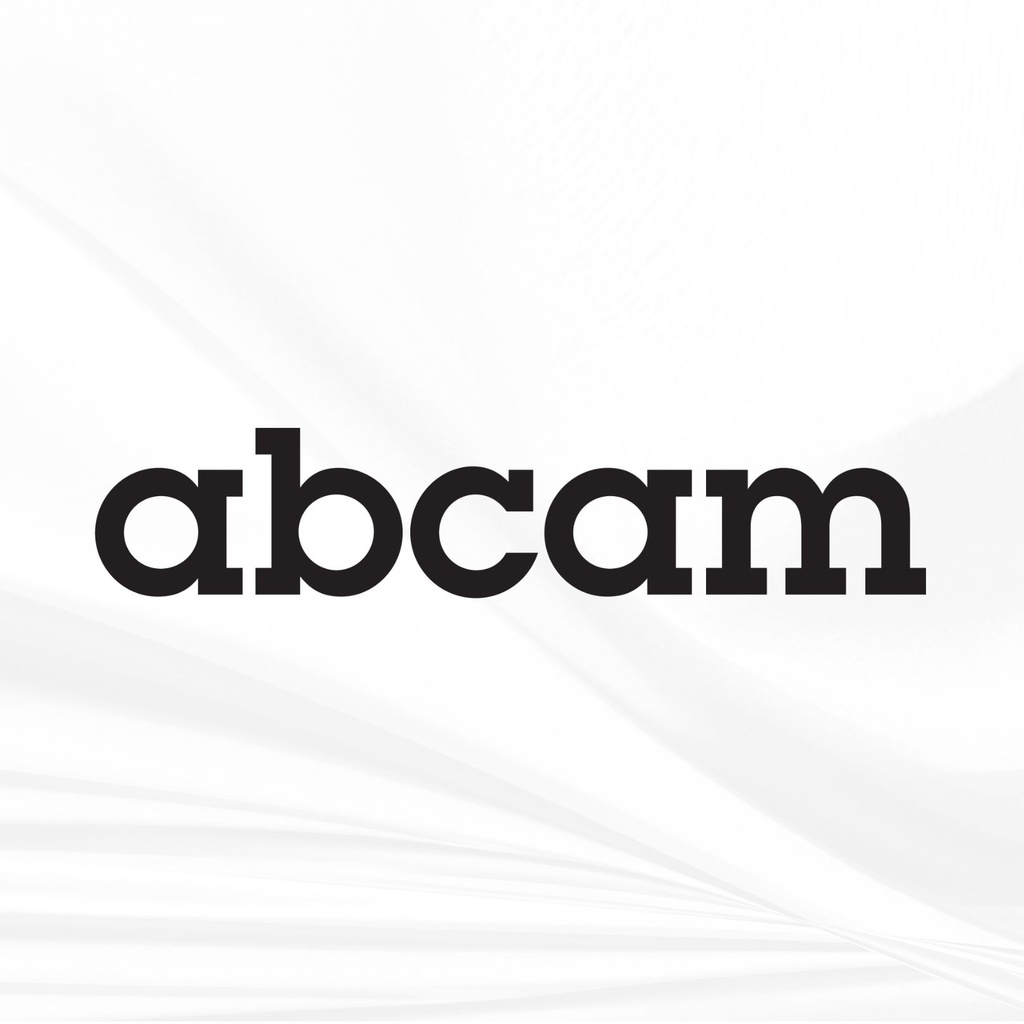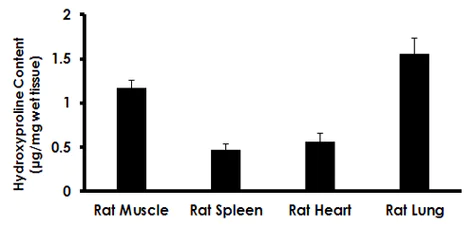- All Products
- abcam Hydroxyproline Assay Kit (Colorimetric)
abcam Hydroxyproline Assay Kit (Colorimetric)
https://mtmedicalscience.com/shop/mt-mc-ab222941-abcam-hydroxyproline-assay-kit-colorimetric-1668 https://mtmedicalscience.com/web/image/product.template/1668/image_1920?unique=7528c5fMT-MC-ab222941
*กรณีแสดงราคา 0 บาท กรุณาติดต่อบริษัทเพื่อสอบถาม ราคาขาย*
Detection method
Colorimetric
Sample types
Urine, Tissue Homogenate, Serum, Other biological fluids
Assay type
Quantitative
Reactive species
Mammals
Range
0.1 - 1 µg
Assay time
3h
Assay Platform
Microplate reader
Shipped at conditions
Blue Ice
Appropriate short-term storage conditions
-20°C
Appropriate long-term storage conditions
-20°C
Storage information
Please refer to protocols
Hydroxyproline Assay Kit (Colorimetric) ab222941 provides a quick and convenient method to quantify hydroxyproline in tissue lysates and biological fluids such as urine and serum. The hydroxyproline assay is used to indicate the amount of collagen in a sample, as hydroxyproline is found in collagen, and is only found in small quantities in other proteins.
How the assay works
The classical hydroxyproline assay protocol is based on the oxidation of hydroxyproline to a pyrrole intermediate followed by reaction with Ehrlich's reagent dissolved in concentrated perchloric acid. Perchloric acid is a hazardous material that is both toxic and highly reactive, requiring special handling and waste-disposal protocols.
This hydroxyproline assay protocol employs a proprietary acidic developer solution to accurately measure hydroxyproline in hydrolysates without the use of hazardous perchlorates. It is a quick and convenient protocol where hydroxyproline gets oxidized to form a reaction intermediate, which further in reaction forms brightly-colored chromophore that can be easily detected at OD 560 nm.
The assay can detect as low as 0.05 μg hydroxyproline/well.
The hydroxyprolineassay uses an identical assay principle and assay components to our total collagen assay kit Total Collagen Assay Kit (Perchlorate-Free)ab222942, except that the standard curve of this assay is constructed from hydroxyproline, whereas the total collagen assay uses collagen itself, which makes the total collagen assay a more direct way to quantify collagen levels.
Hydroxyproline assay protocol summary
- - Add 10 N concentrated NaOH to samples and hydrolyze at 120°C for 1 hr
- - Cool on ice
- - Neutralize with 10 N concentrated HCl, centrifuge and collect supernatant
- - Add samples and standards to wells
- - Evaporate wells to dryness by heating at 65°C
- - Add oxidation reagent mix to dissolve crystalline residue, and incubate at room temp for 20 min
- - Add developer and incubate at 37°C for 5 min
- - Add DMAB concentrate and incubate for 45 min at 65°C
- - Analyze with microplate reader
Getting the best performance from ab222941
We do not offer K555 Hydroxyproline Colorimetric Assay Kit from BioVision. We recommend ab222941 as an alternative.
This product is a replacement for Hydroxyproline Assay Kit K555; this kit does not contain the hazardous Perchloric acid which is present in K555.
The components in this product are exactly the same as in K555, except that the Perchloric acid/Isopropanol Solution component in K555 has been replaced with the Developer component.
If you would prefer to continue to use a kit in the format of K555, then use this product and:
1) In a fume cupboard, mix 1 ml of 70% Perchloric Acid and 5 ml of Isopropanol to produce the Perchloric acid/Isopropanol Solution component previously provided in K555.
2) Then follow the protocol for K555 below, using the components from this product, and the Perchloric acid/Isopropanol Solution that you produced.
Alternative protocol for Perchloric acid/Isopropanol method:
Do not use with the standard format of the kit, use the main protocol for use with the kit
- 1. Sample Preparation: Tissue or protein/peptide samples such as lung tissue should be homogenized in dH2O, using 100 μl H2O for every 10 mg of tissue. To a 100 μl of sample homogenate, add 100 μl concentrated HCl (~12N, not provided) in a pressure-tight, teflon capped vial and hydrolyze at 120°C for 3 hours. In case of urine, hydrolyze urine samples with equal volumes of concentrated HCl (~12 N; i.e. 100 µl Urine + 100 µl HCl) in a pressure-tight, teflon capped vial. Hydrolyze at 120°C for 3 hrs (See note c). Clarify urine samples with activated charcoal by adding 4 mg of activated charcoal. Vortex and centrifuge at 10000 x g for 3 min. to remove precipitate & activated charcoal. Repeat if needed. Transfer 10 μl of each hydrolyzed sample to a 96-well plate and evaporate to dryness under vacuum. Notes: For unknown samples, we suggest performing a pilot experiment & testing different sample dilutions to ensure the readings are within the Standard Curve range. Endogenous compounds may interfere with the reaction. To ensure accurate determination of Hydroxyproline in the test samples, we recommend spiking samples with a known amount of Standard (0.4 µg). For sample hydrolysis, polypropylene vials yield best results.
- 2. Standard Curve Preparation: Dilute the Hydroxyproline Standard to 0.1 mg/ml by adding 10 μl of the 1 mg/ml Standard to 90 μl of dH2O, mix well. Add 0, 2, 4, 6, 8, 10 μl into a series of wells to generate 0.2, 0.4, 0.6, 0.8 & 1 µg/well Hydroxyproline Standard.
- 3. Reaction: Add 100 ul of the Chloramine T reagent to each sample and standard and incubate at room temperature for 5 min. Add 100 μl of the DMAB reagent to each well and incubate for 90 min. at 60°C.
- 4. Measurement: Measure absorbance at 560 nm in a microplate reader
- 5. Calculation: Correct background by subtracting the value derived from the 0 Hydroxyproline Standard from all readings (The background reading can be significant and must be subtracted). Plot the Standard curve. Apply the sample readings to the standard curve to get the hydroxyproline amount in the reaction wells (B).
Sample Hydroxyproline concentration (C) = B/V x D ug/µl
Where:
B is the amount of Hydroxyproline from Standard Curve (µg)
V is the sample volume added into the reaction well (µl)
D is the sample dilution factor
Note: For spiked samples, correct for any sample interference by subtracting the sample reading from spiked sample reading.
Related and recommended products
Other biochemical assays to measure the biology of collagen include:
- - Soluble Collagen Assay Kit Soluble Collagen Assay Kitab241015
- - Collagenase (Collagen Degradation/Zymography) Assay Kit (Fluorometric) Collagen Degradation/Zymography Assay Kit (Fluorometric)ab234624
- - Collagenase Activity Assay Kit Collagenase Activity Assay Kit (Colorimetric)ab196999
- - For collagen staining we provide:
- - Trichrome Stain Kit (Connective Tissue Stain) Trichrome Stain Kit (Connective Tissue Stain)ab150686
- - Picro-Sirius Red Stain Kit (Connective Tissue Stain) Picro Sirius Red Stain Kit (Connective Tissue Stain)ab150681
- - Picro-Sirius Red Solution Picro-Sirius Red Solutionab246832
- - Picro-Sirius Red Stain Kit (Cardiac Muscle) Picro-Sirius Red Stain Kit (Cardiac Muscle)ab245887
Other notes
This product is manufactured by BioVision, an Abcam company and was previously called K226 Hydroxyproline Assay Kit (Perchlorate-Free). K226-100 is the same size as the 100 test size of ab222941.
The Safety Datasheet for this product has been updated for certain countries. Please check the current version in the Support and downloads section.
The quality of HiYield™ Plasmid Mini Kit is test on a lot-to-lot basis. The kits are tested by isolation of plasmid DNA from 3ml culture of E.coli DH5 transformed with the plasmid pUC19(A600>2units/ml). More than 20μg of plasmid DNA was quantified with spectrophotometer.
- QPS-101T
- THUNDERBIRD® Probe qPCR Mix 1 ml × 1
- 50x ROX reference dye 50 µl × 1
- QPS-101
- THUNDERBIRD® Probe qPCR Mix 1.67 ml × 3
- 50x ROX reference dye 250 µl × 1
- QPS-101X5
- THUNDERBIRD® Probe qPCR Mix (1.67 ml × 3) x 5
- 50x ROX reference dye 250 µl × 5

- Hot Start
- Probe
- 2x Reaction mix
- 20µl total reaction volume
- Store at -20oC
- 50x ROX reference dye
- Hot Start
- Probe
- 2x Reaction mix
- 20µl total reaction volume
- Store at -20oC
- 50x ROX reference dye
- Hot Start
- Probe
- 2x Reaction mix
- 20µl total reaction volume
- Store at -20oC
- 50x ROX reference dye























